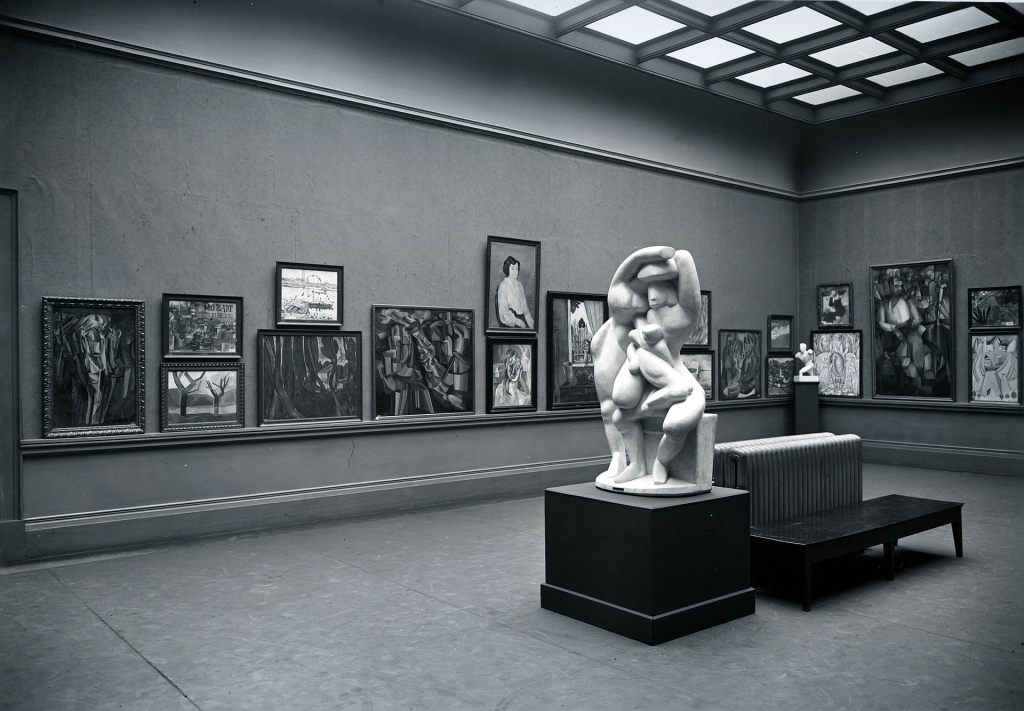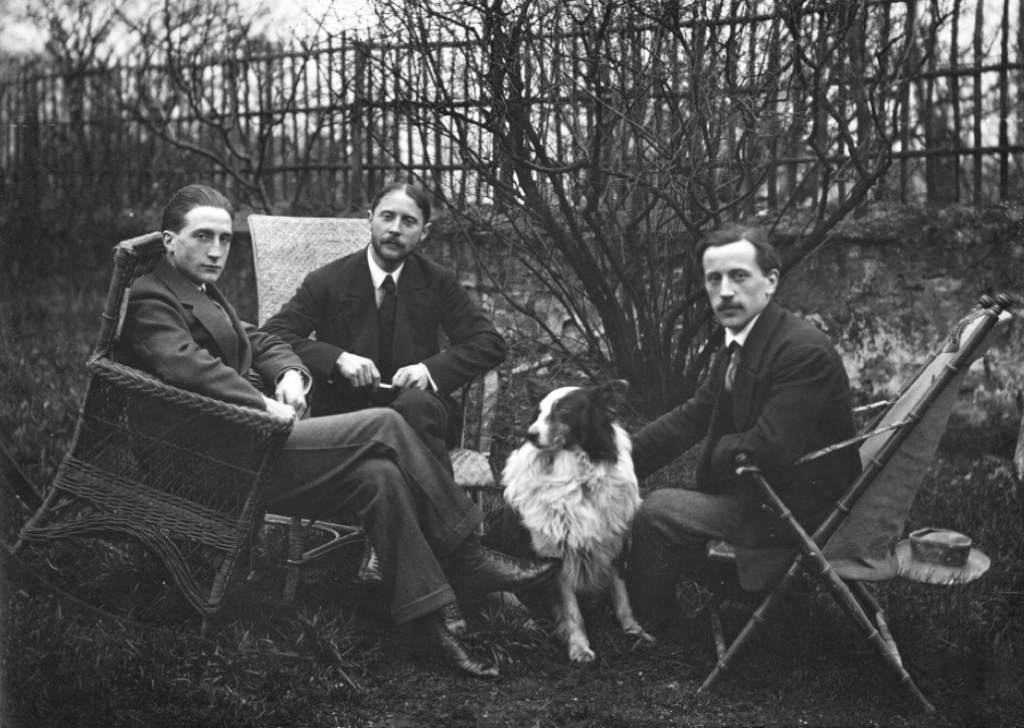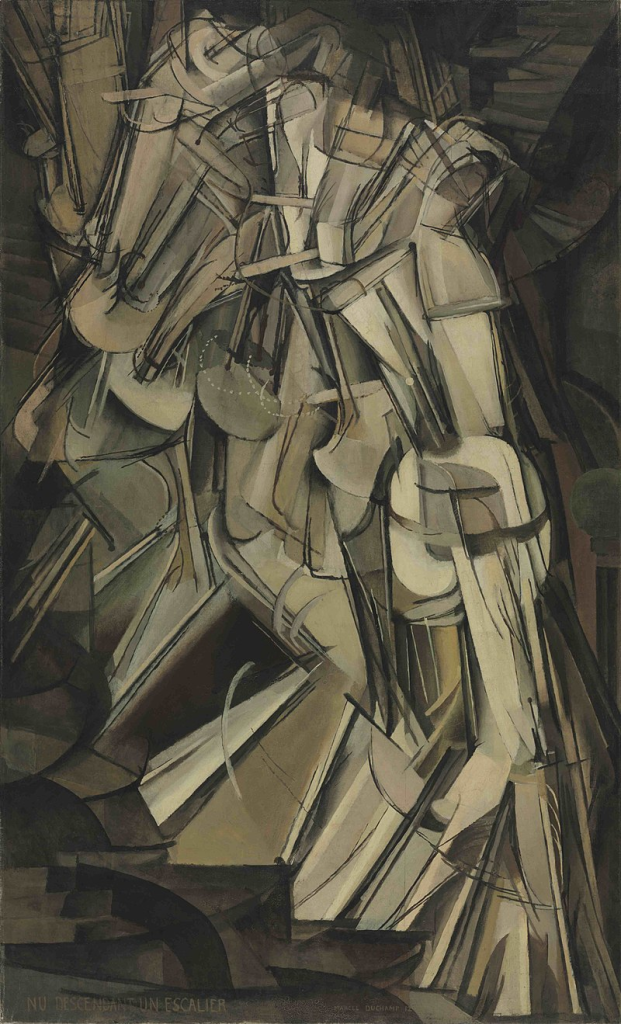The Armory Show: A Landmark in Art History
The exhibition, The Armory Show (now known by its full title the International Exhibition of Modern Art), is a touchstone in US art history. The landmark exhibition, held in 1913 at the 69th Regiment Armoury in New York City, marked America’s first time encountering these new avant-garde movements from Europe and has been widely considered a pivotal moment that set modern art on its course to our present day. To place our articles and essays in other publications we have permission from the writer.|This essay examines the origins, impact for arts as well its lasting affects of The Armoury Show which has had a hand two to play… continue reading >>
Origins and Organization
Developed as a partnership by the Association of American Painters and Sculptors — an organization established in 1912 following collaboration amongst artists such as Arthur B. Davies, Walt Kuhn, and Maurice Prendergast In a bid to subvert the conservative art establishment and educate American audiences about modern European art, it was decided by them that an all-encompassing exhibition featuring contemporary currents in international art would be scheduled. Not only was a choice of venue the Armory, which saved on costs and symbolized how close art had hewed to life in those years. The armory was a cavernous space, perfect for showcasing all of the artwork gathered together. It also highlighted the organizers’ desire to subvert traditional exhibition spaces and show contemporary art in a different, unconventional light.

The Exhibition’s Scope
The Armory Show was distinctive because it sought to offer an almost encyclopaedic insight into the state of contemporary art. Organized by the Museum of Modern Art in New York City, these works included examples from major European movements: Fauvism, Cubism and Expressionist painting; there were also American artists already modifying their modernist styles. Some of the well-known European artists featured included Pablo Picasso, Henri Matisse and Marcel Duchamp with his now-famous “Nude Descending a Staircase, No. 2,” which became one of the most talked about pieces at the show (and sparked plenty of controversy). The survey presented some 1,200 art objects in the fields of painting, sculpture and decorative crafts. The different styles and methodologies depicted in the series directly contradicted established visual aesthetics, opening a doorway of American artistic exploration that had never before been seen. This comprehensive attitude portrayed not just what was popular at the time, but also a look into how art is alive and voraciously changing.

Impact on American Art
No American art movement has been exactly like Fauvism, but elements of the style have appeared in various periods and places; its influence on the history of 20th-century art is immeasurable. It was this last phase that had an extraordinary effect on American artists who came to be known as Modernists during their assault upon everything Victorian, including illustration which was a prescient suggestion for modern America independent thought. Before the show, American art was largely commanded by conservative tastes and academic traditions. It was as if the show dared to wake audiences up with these new styles and critiques in concepts not firmly-formed representing bodies. The most palpable impact of The Armory Show was the influx into America’s artistic consciousness of European modernist ideas. Its daring, experimental methods inspired a generation of American artists to experiment in process and viewpoint as well. With artists such as Georgia O’Keeffe, John Marin (above), and Marsden Hartley in attendance at the show — each significantly influenced by what they had seen of European modernist experiments elsewhere— a mainstream adaptation was almost inevitable.
The show also led to a reconsideration of art institutions and the artist’s place. The Armory Show underscored the requirement of new venues and establishment that can rescue where contemporary art could affiliate or forbear ante closing. After the exhibition, a number of new art institutions and galleries opened that focused on showing modernist work, helping to create an overall more diverse (though still marginalized) venue for American contemporary art.
Public and Critical Reception
Reaction to The Armory Show included both wild enthusiasm and vitriol Some critics and viewers were thrilled by the avant garde nature of what was on view, while others seemed shocked, or at least irritated in claiming how outrageous it all loomed. The exhibition´s defiance of traditional artistic norms and the controversial nature of many presentations led to intense discussions about what defines art and where it belongs in society. Perhaps the most famous controversy surrounded Marcel Duchamp’s “Nude Descending a Staircase, No. 2.” The painting’s fractures, distorted form and bold composition confused its viewers; it sparked considerable debate in the discursive world. Its presence in the exhibition was a testament to how much of boundary-pushing, norm-challenging show this exhibit truly is.

Although mired in controversy, The Armory Show was a tremendous success with respect to its reception and lasting impact. The exhibition, which was powerful enough to inspire conversation and provoke controversy over the future of art, pointed towards how important it would be in writing history. If it had any major impact, its influence was not in the rippling effect on he people who watched and their immediate reactions to watching this episodic program with very little continuity between one episode and another, but rather for a larger shift toward modernist ideas generally speaking as well an adopting more experimental forms of form.

Legacy and Influence
The Armory Show Its legacy is visible today in the long-term effects it had on American art and culture. It proved to be a watershed event for American art, and it remains the subject of debate between artists, critics, and collectors. European modernism was established and this painted a manner for American audience to put contemporary art into perspective, which in turn primed the pump of future artistic innovations and movements.

During the decades that followed The Armory Show, American art grew increasingly complex and more diversified as artists embraced modernist modes of practice while integrating new concepts or techniques. It encouraged new forms of experimentation and artistic freedom, giving rise to numerous art movements such as Abstract Expressionism, Pop Art or Minimalism. In as much it had an impact on a number of art institutions which was quite enduring, The Armory Show also brought something new to the ways in which we view exhibitions. The show changed in how art is presented and seeing the work of little-known artists transformed a space for exhibiting contemporary avant-garde pieces into an alternative venue where exhibitions can be organized. The focus on presenting new work and ideas in a dialogue with current concerns was to be characteristic of many future art shows, and the institutions that would rise from them.
Conclusion
It is a landmark exhibition in the history of American art, one that clearly signaled an epochal transformation and redefinition. With a broadening of the American audiences exposure to modernist ideas and avante-garde art, it had an hugely significant impact in shifting the direction that both artists worked towards a deeper understanding for experimental means.’ Its legacy is alive in the continuous exploration of unknown art territories and contemporary arts established refinements. The Armory Show, as it still does today, stand tall among the landscape of landmark events that underscored art’s capacities to disrupt and provoke conversation in order to reflect something new.
Feature Image: Entrance of the Exhibition, 1913, New York City| Courtesy: wikipedia





